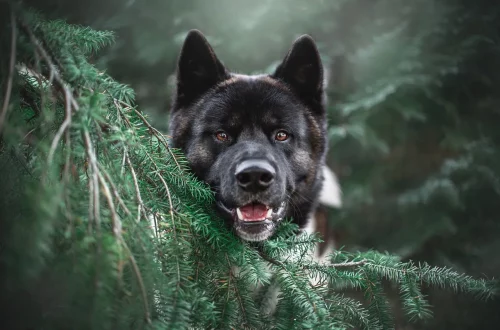
Can Dogs Catch Lice from Humans? Understanding the Risks and Facts
Understanding the dynamics of human and animal interactions is crucial, especially when it comes to health risks that can cross species lines. Among the various concerns pet owners might have, the potential for lice transmission between humans and dogs often arises. Lice are small, wingless parasites that can infest the hair and skin of their hosts, leading to discomfort and health issues. While we often think of lice as a problem primarily affecting children, it is essential to consider the implications for our furry companions as well.
Dogs and humans share close living quarters and social interactions, which can lead to questions about the risks of lice transmission. Understanding how these parasites operate, their life cycles, and specific host preferences can help clarify whether dogs can indeed catch lice from humans. This topic not only highlights the importance of maintaining hygiene for both ourselves and our pets but also sheds light on the broader implications of parasitic infestations. As we explore this subject, it becomes clear that awareness and preventive measures are key to ensuring the health and well-being of both humans and their canine friends.
The Biology of Lice: Understanding Their Life Cycle
Lice are ectoparasites that live on the surface of the skin and feed on the blood of their hosts. There are two primary types of lice that affect humans: head lice and body lice. Head lice are known for their tendency to infest the scalp and hair, while body lice tend to reside in clothing and migrate to the skin to feed. Both types of lice undergo a life cycle that includes three stages: egg (nits), nymph, and adult.
The female louse lays eggs, which are often glued to the base of hair shafts. These eggs hatch into nymphs after several days, and nymphs mature into adult lice within about a week. Adult lice can live for around 30 days on a host but will die within a day or two if they fall off. Understanding this life cycle is crucial when considering the risk of lice transmission.
Lice are highly host-specific, meaning that the type of lice that infects humans is different from that which infects dogs. Canine lice, primarily the *Trichodectes canis* species, have adapted to live on dogs and do not thrive on human hosts. This host specificity significantly reduces the risk of transmission between species. While lice can easily spread among individuals of the same species through close contact or sharing personal items, the same does not apply to humans and dogs.
However, it is essential to note that while dogs cannot catch lice from humans, they can develop their own lice infestations if they come into contact with infested environments or other infected animals. This means that pet owners should be vigilant about their dog’s hygiene and overall health to prevent any possible lice infestations.
Signs and Symptoms of Lice Infestation in Dogs
Recognizing the signs of lice infestation in dogs is essential for prompt treatment and recovery. While dogs cannot catch lice from humans, they can be susceptible to their own lice if conditions are favorable. The symptoms of lice infestation can vary, but there are several common indicators that pet owners should look out for.
One of the first signs of lice infestation is excessive scratching. Dogs with lice may scratch or bite at their skin more frequently than usual, leading to irritation and sometimes secondary infections. This behavior can be distressing for both the dog and the owner, as it can disrupt the pet’s normal activities and overall well-being.
Additionally, pet owners may notice hair loss, particularly in patches where the dog has been scratching. This can be accompanied by skin redness or inflammation, which indicates that the skin is reacting to the lice’s presence. In some cases, the dog may develop a dull coat, and the skin may appear dry or flaky.
Another noticeable sign of lice is the presence of adult lice or their eggs (nits) on the dog’s fur. Adult lice are small, approximately the size of a pinhead, and can be challenging to spot due to their rapid movement. Nits, on the other hand, are easier to see and appear as tiny white or yellowish specks attached to the hair shafts.
If you suspect that your dog may have lice, it is crucial to consult a veterinarian for proper diagnosis and treatment. They may recommend topical treatments or medicated shampoos specifically designed to eliminate lice and alleviate the associated symptoms. Regular grooming and bathing can also help reduce the risk of lice infestations and keep your dog’s coat healthy.
Preventive Measures for Lice Infestation in Dogs
Preventing lice infestations in dogs requires a proactive approach to hygiene and overall pet care. While the risk of dogs catching lice from humans is low, there are several measures pet owners can take to minimize the chances of lice infestations in their pets.
First and foremost, regular grooming is essential. Brushing your dog’s coat not only helps remove loose hair and dirt but also allows you to check for any signs of lice or other parasites. Regular grooming sessions can help you spot problems early, making treatment more effective.
Additionally, maintaining a clean living environment is crucial. Regularly washing your dog’s bedding, toys, and any items they frequently come into contact with can help reduce the likelihood of lice and other parasites. Vacuuming your home, particularly in areas where your dog spends a lot of time, will also help remove any potential lice or eggs that may have fallen off.
When it comes to socializing with other dogs, it’s essential to be cautious. Avoid allowing your dog to play with or come into close contact with animals that you suspect may have lice or other infestations. If your dog has been in a kennel or grooming facility, it’s wise to check them for signs of lice upon returning home.
Lastly, consult your veterinarian about preventive treatments. They can recommend products that can help protect your dog from lice and other parasites. Regular veterinary check-ups can also ensure your dog remains healthy and free from infestations.
In summary, while dogs cannot catch lice from humans, they can still be susceptible to their own lice infestations. By implementing preventive measures and maintaining good hygiene, pet owners can help protect their furry friends from these pesky parasites.
**Note:** This article is for informational purposes only and should not be considered medical advice. For any health concerns regarding your pet, please consult your veterinarian.




